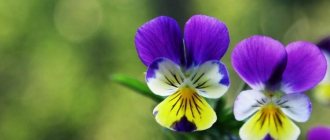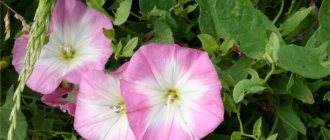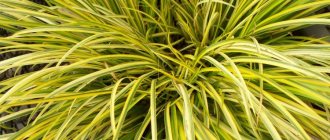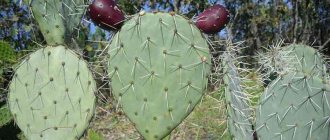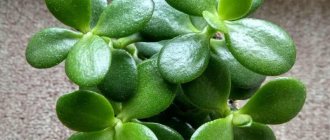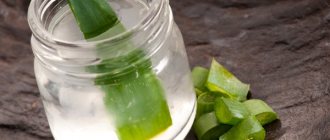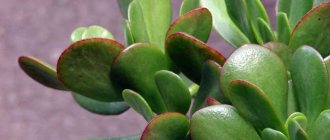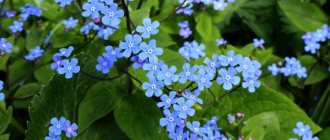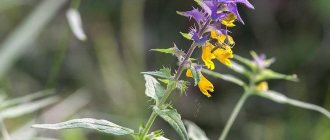Description of Caucasian rhododendron
Caucasian rhododendron is an evergreen plant of the Ericaceae family of the Rhododendron genus. Found naturally in the Lesser and Greater Caucasus. Forms extensive thickets next to snow-covered fields. It lives at altitudes from 1600 to 3000 above sea level.
It has been cultivated since the beginning of the 19th century. Well adapted to the conditions of the middle zone. It is planted on the territory of European Russia, including in the North-Western region. Many species of Caucasian rhododendron are listed in the Red Book.
A shrub with a usual height of 50 - 60 cm sometimes reaches 1 - 2 m. The branches are recumbent, with dark bark. The leaves are oval-shaped, oblong, leathery, pointed at the ends. The leaf blade is dark green on top and covered with short red hairs on the bottom. Leaves length is up to 10 cm.
The flowers are funnel-shaped and resemble bells, up to 4 cm in size, color - from whitish to pink, with a light, pleasant aroma. The flowers are collected in umbrella-shaped inflorescences. There are greenish spots inside. Pedicels and calyxes are covered with red hairs. After flowering, a box up to 3 cm long is formed.
Caucasian rhododendron in the photo:
Differences from other types
Why rhododendron does not bloom in open ground in the garden: what to do
There is some confusion in the classification of Caucasian rhododendrons. Several species of shrubs growing in the same area are considered to be Caucasian, but there is also a separate species under this name. In other words, the following varieties are considered Caucasian rhododendrons:
- Caucasian yellow rhododendron is a frost-resistant, shade-loving plant with small (1-2 cm) bright yellow flowers. Due to its aroma it is in demand when creating perfumes;
- Caucasian mountain rhododendron is distinguished by larger (up to 5 cm) white flowers. Its hybrid varieties are grown in gardens, having flowers of pink and yellowish shades, plain and speckled;
- Pontian rhododendron is a honey-bearing tree species, but its honey has not only healing, but also poisonous properties. The tree can reach 6 m in height. It also has many hybrid forms with flower colors ranging from white to deep purple.
Varieties of Caucasian rhododendron
Varieties of Caucasian rhododendron
Depending on the color of the flowers, there are several varieties of rhododendron:
- Cunninghams White. The variety was bred at the end of the 19th century. This is a winter-hardy and unpretentious plant up to 2 m high. The crown diameter is up to 1.5 m. The culture is not demanding on soil acidity and does not suffer from urban pollution. The flowers are white, with lilac specks on the upper petal. Flowering occurs in early June;
- Riga white. The plant is up to 70 cm high. In spring it produces snow-white flowers, which is how the variety got its name. Grows in parks and the botanical garden of Riga;
- Straw yellow. Shrub up to 1.5 m high and up to 3 m wide. Found in mountainous areas. The flowers are bell-shaped with a diameter of 4 - 6 cm. The flowers are yellow in color, collected in inflorescences of 8 - 12 pieces;
- Rosea Alba. A decorative form characterized by early flowering. Produces beautiful pinkish-white flowers.
Medicinal properties of Caucasian rhododendron
The leaves of Caucasian rhododendron have healing properties. They contain acids, essential oils, tannins, rhododendrin, vitamin C, and tannins. The roots of the plant contain substances that burn fat.
Attention! The leaves of the plant also contain andromedtoxin. In high concentrations, this substance is poisonous and causes poisoning.
Treatment with Caucasian rhododendron is carried out under the supervision of a doctor. The specialist will conduct an examination and prescribe the required dose. At high concentrations, intake leads to intoxication and worsens health.
The effect of Caucasian rhododendron on the body is as follows:
- increases sweating, removes toxins and other harmful substances;
- normalizes body temperature, relieves fever during colds;
- removes cholesterol from the blood;
- calms the nervous system;
- burns fat and helps you lose weight;
- diuretic effect helps relieve swelling;
- prevents the growth of harmful bacteria;
- increases blood flow and contraction of the heart muscle;
- reduces venous pressure;
- benefits for rheumatism, colitis, epilepsy.
Effective remedies against poisoning by mercury and other toxic substances are obtained from Caucasian varieties. The drugs relieve headaches and restore mucous membranes. Aqueous extracts are used to rinse for diseases of the oral cavity.
An infusion of leaves is used for infertility and uterine erosion in women. The medicinal properties of Caucasian rhododendron for men are to relieve inflammation in the prostate gland.
Chemical composition
There are many rumors and legends about this shrub plant. Some testify to it as an excellent medicine, others warn about the toxic substances it contains. The truth, as always, is in the middle - it is not without reason that rhododendron is recognized by both traditional and official medicine.
When people talk about this plant in a negative way, they always first of all mean the andromedotoxin it contains. This is a non-trivial substance that is considered a natural poison. It belongs to the class of glycosides. If the dose is exceeded, it can cause harm to the body, since it affects the functioning of the heart, disrupting the activity of its receptors. It first has a stimulating effect on the nervous system, then a depressant, and this can result in death. Its effect is in a certain sense similar to that of a drug. But in small doses, andromedotoxin has a calming effect, so the main thing is not to exceed the norm, and then, of course, this substance begins to work for human health.
The beneficial effect of rhododendron is also due to the tannins included in its composition. The plant is valued for its anti-inflammatory and health-promoting actions. Most of them are found in leaves.
Flavonoids, which are also a component of the chemical composition, also have an anti-inflammatory effect. In addition, they give the plant antioxidant and anticarcinogenic properties.
Essential oils contained in all parts of the plant also contribute to the creation of an anti-inflammatory effect and inhibit the proliferation of bacteria and viruses.
The flowers of the plant contain a lot of vitamin C, so it is recommended to collect medicinal raw materials at the time of flowering. Then it turns out to be especially rich in this vitamin, without which it is very difficult for the body to resist viruses and absorb calcium and iron.
Another component of rhododendron is gallic acid, it was used in medicine in ancient China and is characterized by antioxidant and antitumor properties. It also has a beneficial effect on the liver, protecting it from negative factors of various origins.
Ursulic acid, also part of rhododendron, helps burn fat, gives a slim figure, simultaneously stimulates muscle function and inhibits the proliferation of tumor cells.
Methods for harvesting Caucasian rhododendron
In order for plants to bring maximum benefit to the body, it is important to properly prepare the raw materials. Leaves are cut during the flowering period from bushes older than 2 years. To do this, use sharp scissors or pruning shears. For work, choose the morning or evening period.
The collected leaves are dried outdoors or indoors. Be sure to choose a place in the shade, protected from direct sunlight. The collected raw materials are laid out on paper or clean cloth. The leaves are kept until completely dry. The mass is stirred periodically.
When the raw material becomes more brittle and brittle, it is removed for storage. Dried leaves are kept at room temperature, protected from sunlight and high humidity. It is best to place the mixture in a container and close the lid. The storage period is up to 2 years.
Step-by-step instructions for preparing a tea drink
To preserve the beneficial properties of the plant, it is important to prepare the drink correctly, and then we will tell you how to prepare raw materials from leaves and other parts of rhododendron, how to then brew it and what to drink tea with
Stock up on raw materials
Rhododendron leaves or dry crushed leaves and stems. Flowers will also work. Raw materials are used fresh or prepared in the following way:
- Choose plants that are two to three years old.
- Leaves, stems and flowers are collected during the flowering period.
- Place the plant parts on a clean cloth in a dry, well-ventilated place away from direct sunlight. You can dry raw materials under a canopy, in a warm room, in the open air, or in the attic. The leaves are scattered in a thin layer and stirred periodically.
- Dry until completely ready: with a slight squeeze, the flowers and leaves break easily.
- Place in a glass container and cover tightly with a lid. Store in a dark place at a temperature not exceeding +5°C. The shelf life of raw materials is two years.
Prepare ingredients and equipment
Ingredients:
- leaves: fresh - 2 pieces or dried - 4 pieces;
- hot water - 1 glass;
- milk - 1 glass.
Required equipment:
- a metal container with a lid or a kettle or thermos;
- sieve or gauze.
Brew
- Pour boiling water over the kettle.
- Place the leaves at the bottom of the container.
- Pour a glass of hot water, the temperature of which should be +80+90 °C.
- Leave for at least 10 minutes.
- Strain.
- Add warm milk.
- Bring to a boil over low heat.
- Add salt, pepper and cream to your taste.
Tea can be brewed in a thermos and steeped for 30 minutes.
Important! You need to follow the recipe exactly. In the case of using crushed leaves, it is enough to take half a teaspoon of the raw material per glass of water
You can add honey, sugar or lemon before use.
In the case of using crushed leaves, it is enough to take half a teaspoon of the raw material per glass of water. You can add honey, sugar or lemon before use.
How to brew Caucasian rhododendron
Caucasian rhododendron tea relieves sore throat due to colds. The drink strengthens the immune system, calms the nervous system, and relieves insomnia. It is also used for gargling.
The procedure for preparing tea from Caucasian rhododendron:
- Pour boiling water over the teapot.
- Place 1 tbsp on the bottom. l. dried leaves.
- Add 1 cup of boiling water.
- Close the teapot with a lid and leave for 15 minutes.
- Strain the infusion.
Prepared tea is taken daily, 1/3 cup. Add lemon, honey or sugar to taste. The plant goes well with other herbs: oregano, thyme, mint, sweet clover, lungwort, sage, fireweed. The course of taking this tea is 2 - 4 weeks, after which they take a break for 2 weeks.
RESULTS
RESULTS. ROOM 2 ROOM ROOM ROOM °Ð»Ð¸ÑÑ Ð¸Ñ ÑÑаканом кипÑÑка. ROOM 10-25 ROOM, ROOM Ñе. ROOM 1 ROOM 3 ROOM ROOM. RUR 200 RUR 20 yen RESULTS ¼Ð½Ð¾Ðµ меÑÑо на две недели. RUR 20 RUR 3 points. RESULTS ÑалÑно.
Application of Caucasian rhododendron
In order for Caucasian rhododendron to have a therapeutic effect, it is important to choose the right method of application. Most often, a decoction or alcohol tincture is prepared from the plant.
A decoction of the leaves normalizes the nervous system and alleviates symptoms of diseases of bones and connective tissue. The course of treatment is at least a month.
Procedure for preparing the decoction:
- 5 g of dried leaves pour 1 liter of water.
- Bring the liquid to a boil for 5 - 8 minutes.
- Remove the container from the stove and leave the broth to steep for 30 minutes.
The product is taken three times a day, 50 ml. The broth is stored in the refrigerator. It is best to prepare fresh product at least once a week.
Another way to use Caucasian rhododendron is as a tincture. Prepare it yourself or purchase a ready-made product at the pharmacy. The course of treatment is from one to two months, after which they take a break for a month. The drug lowers blood pressure and normalizes sleep.
Attention! Taking the tincture should not exceed the dosage: the norm is no more than 25 drops per day.
Instructions for preparing the tincture:
- Measure out 20 g of dry leaves and pour 200 ml of vodka into them.
- The mass is mixed well and kept in a place protected from sunlight.
- After 2 weeks, the product is filtered.
- The resulting tincture is stored in a cool, dark place.
Recipes
Rhododendron is a medicinal plant that can be consumed in different forms: tea, tincture, decoction or just a drink. This variety allows recipes not to become boring, which is why snow rose does not cause disgust or addiction when consumed.
Top 5 most delicious and healthy rhododendron recipes:
Recipe No. 1
Tea made from Caucasian rhododendron has antiseptic properties, so it is good for sore throat and other cold symptoms.
Cooking method:
- Place 20 grams of dried snow rose leaves in a special container and add 200 ml of boiling water.
- Mix the resulting mixture thoroughly and leave to infuse for about two hours.
- Take one teaspoon about 5 times a day until the pain in the throat stops.
To improve the taste of tea, you can add a little honey to it.
Recipe No. 2
Tincture from a medicinal plant helps normalize blood pressure. Suitable only for people with high blood pressure, as it lowers it. The course of taking the tincture should last at least a month and no more than two months, after which a short break should be taken.
Cooking method:
- Dried leaves and flowers of Caucasian rhododendron in the amount of 20 grams, pour 200 ml of vodka.
- Mix the resulting mixture thoroughly and leave to infuse in a dark place for about two weeks.
- After the product has infused, it must be filtered.
The finished medicine must be taken 3 times a day, diluting 25 drops of tincture in a glass of water.
Recipe No. 3
Snow rose decoction is famous for its sedative effect, therefore it is a good assistant in the treatment of problems with the nervous system. This decoction also helps treat diseases of bones, connective tissue and osteochondrosis. The course of taking the medicine lasts at least a month, during which time improvements in the general condition of the body are already felt and the symptoms of the disease disappear.
Cooking method:
- Boil 5 grams of dried rhododendron leaves in one liter of water.
- After boiling for 5-8 minutes, remove from heat and let sit for about half an hour.
- Drink warm decoction 3 times a day, 65 ml daily.
This product must be stored in the refrigerator.
Recipe No. 4
Rhododendron tea can be consumed as a good antipyretic. Everyone knows that when the body fights viruses, a rise in body temperature cannot be avoided. However, experts recommend starting to lower the temperature only at 38 degrees and above. You should not give antipyretics at low temperatures, because the body needs to fight viruses and increase immunity to them.
Cooking method:
- Pour 5 grams of dried rhododendron into 200 ml of boiling water.
- The resulting mixture must be mixed well and allowed to brew for about an hour.
- After the tea has steeped, it must be filtered.
Use the finished natural medicine 3 times a day, 5 grams.
Recipe No. 5
Few people know that the medicinal plant rhododendron helps fight insomnia and epilepsy. This recipe is suitable for people suffering from these ailments. It is quite simple to prepare, but has a number of beneficial properties for the human body. The course of taking this infusion is selected by a specialist individually for each person:
Cooking method:
- 2 grams of dried Caucasian rhododendron leaves should be poured into a glass of boiling water.
- After thoroughly mixing this mixture, you should let it brew for about 15 minutes.
- After the medicine has infused, it is necessary to filter it.
- The infusion should be consumed 3 times a day, one tablespoon.
It is recommended to store natural medicine in the refrigerator.
Recipes for preparing medicinal compositions from Caucasian rhododendron are so simple and easy that preparing them does not take much time and effort. This allows you to cook and consume this plant for a long time.
As practice shows, rhododendron can completely or partially cure various diseases of the human body
However, when consuming this medicinal plant, it is important to remember contraindications, cooking rules and consultation with a specialist.
Do not rush to use synthetic drugs prescribed by your doctor; discuss with him the possibility of treatment with a natural and beneficial rhododendron plant.
Planting and caring for Caucasian rhododendron
Mountain Caucasian rhododendron develops well in the conditions of the middle zone. The plant prefers shady areas with moist soil. The shrub does not freeze at temperatures down to -29 °C. The optimal substrate is leaf soil, peat and coniferous litter in a ratio of 3:2:1.
Rhododendron is planted in the spring. It is better to prepare the planting hole in the fall so that the soil shrinks. The plant is removed at least 70 cm from other shrubs and trees.
Planting procedure:
- A hole 70 cm wide and 50 cm deep is dug in the area.
- Sand and broken bricks are placed at the bottom in a layer of 20 cm.
- The hole is filled with substrate to form a small mound.
- A seedling is placed on top. Its roots are covered with soil.
- Rhododendron is watered abundantly.
- A mulching layer up to 8 cm thick is poured into the tree trunk circle.
In the future, the rhododendron is provided with good care: watering, fertilizing, weeding. The plant requires abundant watering. Water is applied at the root at least 2-3 times a week. The moisture requirement per plant is up to 10 liters.
Attention! The first sign of a lack of moisture in rhododendron is drooping leaves and the appearance of dark spots on them.
Rhododendron is fertilized 2 - 3 times per season. In spring, rotted manure is applied under the bushes. Before and after flowering, use any fertilizer containing phosphorus and potassium. Compounds containing lime and chlorine should be avoided.
For the winter, young Caucasian rhododendron plants are covered with spruce branches. Just also agrofibre and other non-woven materials. They are mounted on a wooden frame. Winter watering and mulching the soil with humus protect well from frost. At the end of March, the shelter is removed, but the spruce branches are left. This will help prevent sunburn on the leaves.
How to plant Caucasian rhododendron in a flowerbed
Caucasian rhododendron prefers damp, dark places. The plant is used in group and single plantings. Select areas with moist soil. An excellent option is planting next to ponds and streams, under ornamental shrubs, spruce, pine and other trees. The plant will help fill the northern side of the site next to the walls of houses and fences.
Rhododendrons planted in groups look impressive. They are located along lawns, paths and alleys. When planting, take into account color compatibility. It is best to combine varieties with white, pink and purple inflorescences.
Rhododendrons produce beautiful solitaire compositions. The tall shrub stands out against the green lawn. The plant is also used to create rocky hills and hedges. Its combination with other alpine herbs is very impressive.
Contraindications
Caucasian rhododendron, despite the presence of a toxic substance in its composition, is approved for use by almost all groups of patients. There are contraindications, but there are not many of them. It is not recommended to use preparations based on this plant during pregnancy. During lactation, it is also worth stopping use, since there is no reliable data as to whether it passes into breast milk. Nephrologists strongly do not recommend using the plant to treat kidneys without a thorough examination. Individual allergic reactions are also a reason for immediate cancellation.
